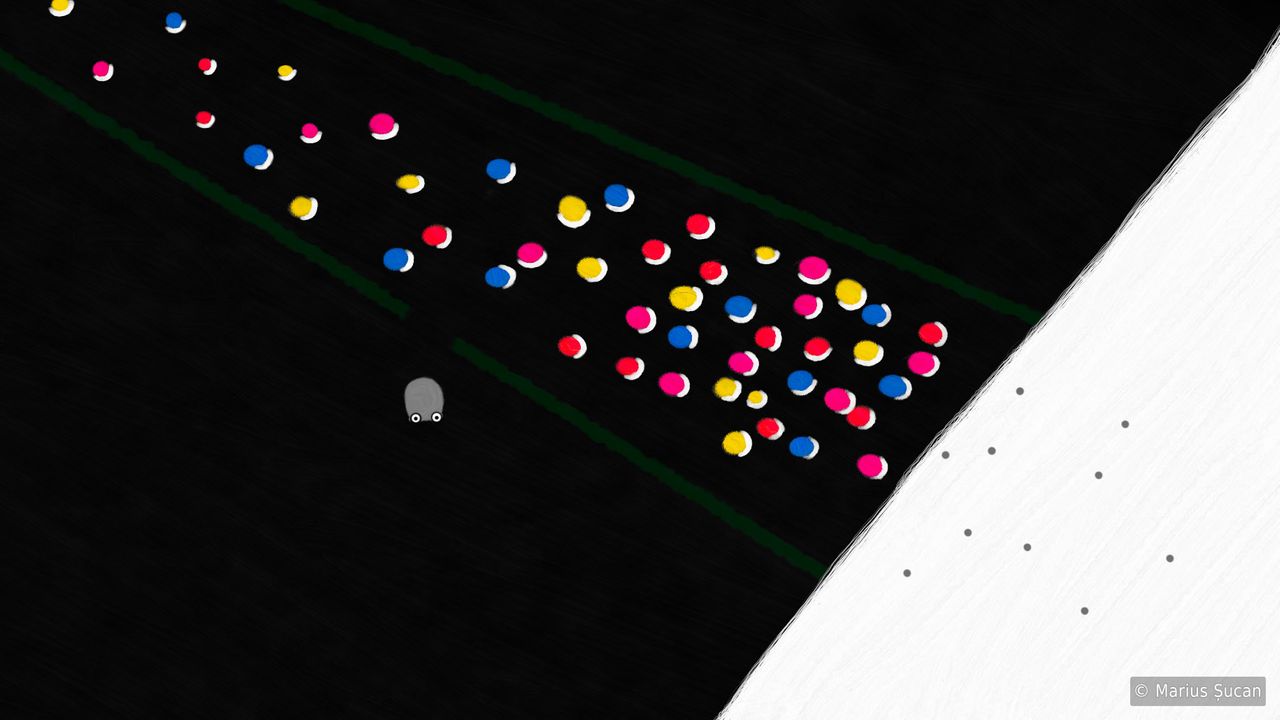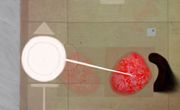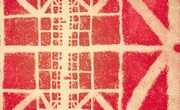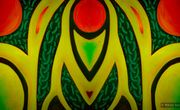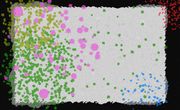The herd instinct
Created .
The subject of this abstract image is group/herd mentality. The image is painted with dissonant colors on a dark background. All members of the crowd are heading for the bottom, right corner of the composition. They are going heading towards an area painted in white. If we look closely, we may observe a gray entity, departing from the multicolored herd, heading in a different direction. In the picture, the gray entity represents the thinking man, the one who does not get carried away easily and avoids the flock mentality. I painted him to visually stand out: gray, and with wide open eyes. In this way I emphasize lucidity, that he is able to think on his own, he is able to see. The gray color suggests neutrality, a true thinker is not an opinionated person, or one that draws attention. The multicolored members of the crowd represent the people blinded by promises... heading consciencelessly in the same direction as everyone else around, never asking why. Notice how they have instead of eyes just a white patch. The diversity and vividness of the colors are meant to show they are all apparently different and have colorful characters, yet they do not seem to think on their own. Or, at least, they let themselves guided or constrained to go in the same directions as everyone else.
The herd is fenced by two green lines. The dark green suggests that the herd is driven subtly, it is not an obvious border. The lines converge at a point outside the composition, somewhere in the top, left. I point out that there is an unseen and unknown entity that manipulates the herd from the outside. This suggested entity, might be a group of people that thinks and makes decisions on behalf of the herd. The thinking man, in this herd, the gray entity, is outside the area of influence marked by the green line. The green line is interrupted to suggest that he has "broken the barrier", he escaped, in one form or another, from the influence exerted by the herd and the puppeteers. He can now be labeled as a potential element of disruption for the herd.
The white area of the composition is the "light" that awaits the herd, the promised land, the hope of a better day. However, despite the color, this area is not something truly positive. This area is clearly delineated. This is not a point, a large circle that would represent a point of interest for the movement of the herd, but a seemingly boundless area. In this way I try to suggest a broader concept, the destination of the herd is a modus vivendi, not something precisely defined. Moreover, you may notice how the entities look different, once they find themselves there. Once they reached the "destination", they are robbed of their own form and color, they get to be reduced to a primitive form. Before, their shapes and colors were not identical. But in the end, they all become identical, small dots. In conclusion, the herd is manipulated into a direction that is a modus vivendi characterized by silence, powerlessness, obedience, where the individuals do no have the privilege anymore to an identity. The direction of travel of the herd, from top to bottom, is on its own a suggestion for decay, regression.
The composition of the image is strongly unbalanced. The white area is not compositionally compensated on the right side by anything. This area seems to be closer to the viewer, because it is very bright, and has a greater visual weight due to its dimension also. Together with the compositional line determined by the movement of the herd, and the border of the white surface, the highest visual tension is at the intersection of the two perceptual lines. In this way, I suggest the clash between the expectations and the reality. People believe they are doing their best, to go in the right direction, to better themselves, but in reality, they end in an existential vacuum pre-ordained by market forces, and other adjacent forces that exert their influences upon them through media.
You can notice that the herd in this picture creates a compositional line that seems to be almost perpendicular to the line determined by the white area. The point of intersection of the two main lines is eccentric and it represents the center of interest in this composition. Approximately, this point of intersection is located at three-quarters of the width of the image, while vertically, it is near to the center. The center of interest has a stable position: it does not seem to go outside the composition and it does not feel like it is attracted to the center of the composition.
The apparent perpendicularity of the two main lines in the composition, together with the sharp chromatic contrast between the two areas, the black and the white one, create the impression of an impact occurring between the herd members and the white surface, an impending disaster. In other words, it suggests a phenomena of major impact: the transition from one mode of existence to another one, as explained above.
